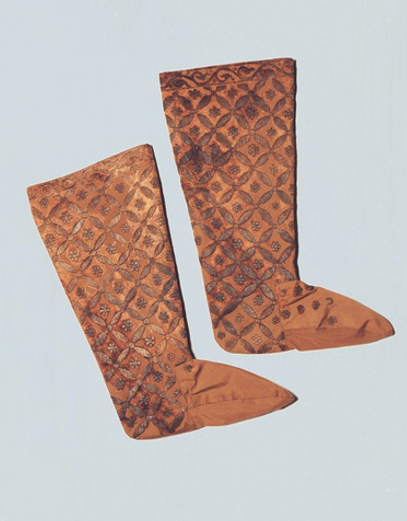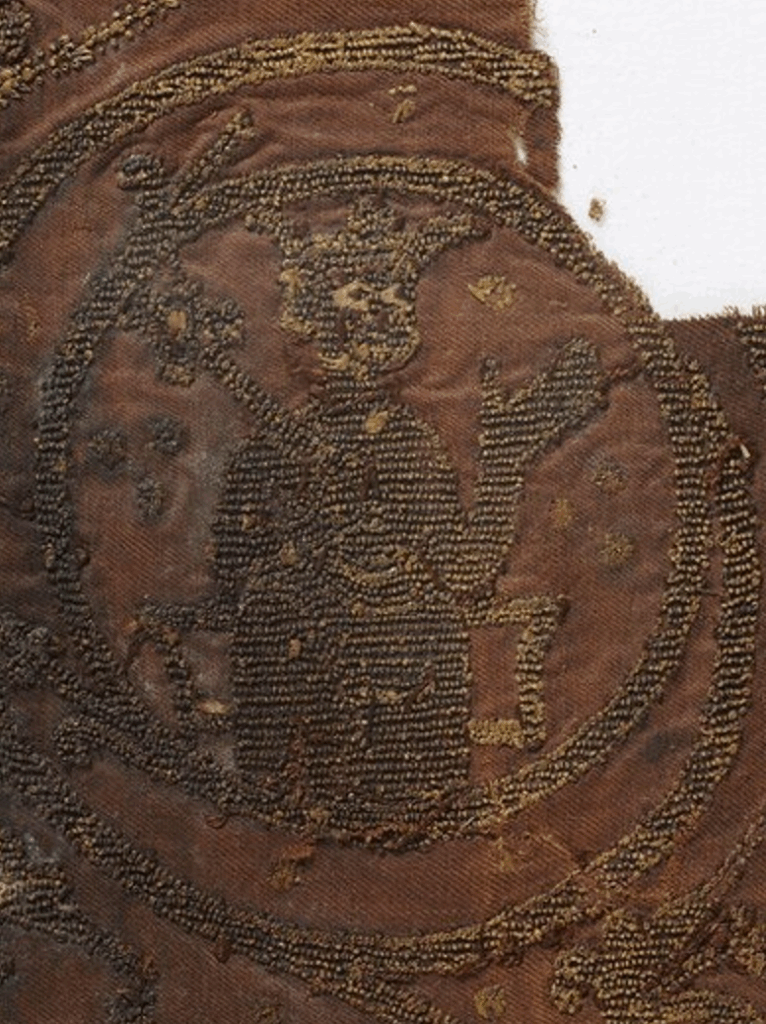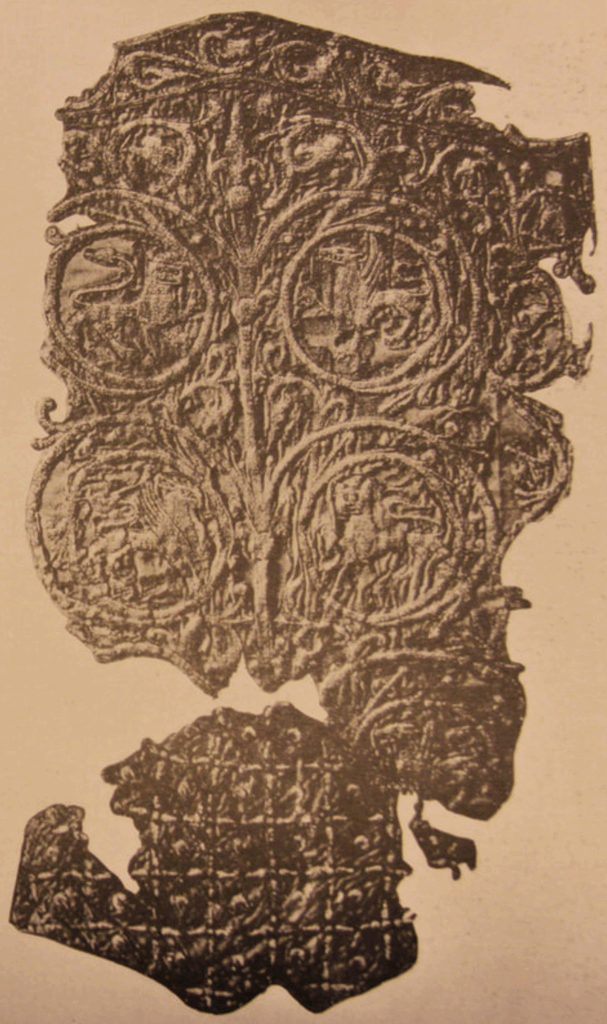Last week, we looked at three pairs of stockings from two kings and a bishop. The oldest pair dated to the 11th century, and the other two were from the late 12th century. This week, we will look at the grave finds of three bishops who lived in the 13th century.

First up are the textile remains of Bishop Beringer von Entringen (died AD 1232). He was bishop of Speyer from AD 1224 until his death. The stockings are covered with a regular geometric flower design stitched in underside couching. The embroidery fabric consists of samite. Unfortunately, the original colour is difficult to establish. The underside couched silver gilt threads (single) are packed in tightly to 30-35 threads per cm. Researchers believe that these stockings were embroidered in England around AD 1200. They are thus a typical piece of Opus anglicanum embroidery.

Due to the 18th and 19th century habit of dividing up archaeological finds between several enthusiastic collectors, the remains of the socks of bishop Walter de Cantilupe of Worcester can now be found in three museums. Bishop Walter was buried in Worcester Cathedral, which holds some of the remains. Furthermore, pieces are held in the British Museum and in the Victoria & Albert Museum. As the finds are divided up between three museums, their original form has not been reconstructed. It is also not helpful that the remnants of the corresponding sandals are not clearly separated from those of the stockings (I believe that the pictures shown in the British Museum link are part of the sandals).
The stockings are covered with a design of standing and seated kings with sceptres amongst elaborate scroll-work. The embroidery is executed with a silver-gilt thread on silk twill. As you can see from the above picture, the embroidery consists of underside couching. You are actually looking at the back of the embroidery. The linen couching thread has completely deteriorated. The only thing left is the gold thread that has been pulled in tiny loops through the silk twill. Only the silk twill is holding the gold thread. The stockings were made in England between AD 1220 and 1250.

The last pair of stockings come from the grave of Bishop Pierre de Charny of Sens in Sens Cathedral. The design on the stockings consists of griffons and leopards set in elaborate scroll-work. The embroidery is executed on silk twill with a silver-gilt thread in underside couching. His stockings were probably already a little older when he wore them for burial. They were made in the early 13th century in England.
Just as we saw last week with the first three stockings, the embroidery is of a non-religious nature. Geometric designs or elaborate scroll work with animals or human figures are popular. The embroidery is also executed directly onto a thick silken fabric. And these last three stockings all show the underside couching technique as seen in Opus anglicanum. I wonder if there were embroidery workshops that specialised in making these all-over embroidered stockings. Did they cater to royalty and bishops alike? Or perhaps also the higher nobility (the ranks just below the king)? Where these patterns found on other embroidered textiles too? Perhaps as borders on a mantle? The fact that the stockings survived under exceptional circumstances in these graves does not mean that they were the only pieces decorated in this way. Maybe they show us a glimpse of what other embroidered textiles of the times looked like!
My Journeyman and Master Patrons will find a PDF of an 1893 publication of the opening of the grave of bishop Hubert Walter of Canterbury for download on my Patreon site. The publication contains full-sized colour photographs of the embroidered stockings and shoes, as well as other textiles found in the grave.
Literature
Browne, C., Davies, G., Michael, M.A. (Eds.), 2016. English Medieval Embroidery: Opus Anglicanum. Yale University Press, New Haven.
Christie, A.G., 1938. English Medieval Embroidery: A brief survey of English Embroidery dating from the beginning of the tenth century until the end of the fourteenth. Clarendon Press, Oxford.
Päffgen, B., 2010. Die Speyerer Bischofsgräber und ihre vergleichende Einordnung: Eine archäologische Studie zu Bischofsgräbern in Deutschland von den frühchristlichen Anfängen bis zum Ende des Ancien Regime. Studia archaeologiae medii aevi 1. Likias, Friedberg.
